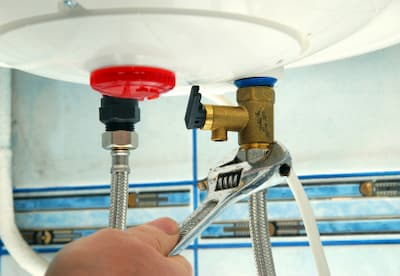Effective Strategies for Maintaining Your Home's Hot Water SystemStep-by-Step Guide to Maintaining Your Home's Hot Water System
Effective Strategies for Maintaining Your Home's Hot Water SystemStep-by-Step Guide to Maintaining Your Home's Hot Water System
Blog Article
Just about every person has their personal conception on the subject of Tips on Maintaining a Water Heater.

Warm water is necessary for daily comfort, whether it's for a rejuvenating shower or cleaning meals. To ensure your warm water system runs successfully and lasts longer, normal upkeep is crucial. This short article provides functional suggestions and understandings on just how to preserve your home's hot water system to avoid disturbances and costly fixings.
Intro
Preserving your home's hot water system may appear difficult, yet with a few basic actions, you can ensure it operates efficiently for years to find. This overview covers everything from understanding your hot water system to do it yourself upkeep pointers and recognizing when to call specialist assistance.
Significance of Maintaining Your Hot Water System
Regular upkeep not only expands the lifespan of your hot water system but also ensures it operates effectively. Disregarding upkeep can bring about lowered performance, greater power costs, and also early failing of the system.
Indicators Your Warm Water System Requirements Maintenance
Recognizing when your hot water system requires focus can protect against major issues. Keep an eye out for signs such as irregular water temperature, weird sounds from the heating system, or rustic water.
Purging the Water Heater
Purging your water heater removes sediment build-up, boosting effectiveness and prolonging its life.
Monitoring and Changing Anode Rods
Anode rods protect against rust inside the storage tank. Checking and replacing them when worn is essential.
Complex Issues Needing Professional Help
Instances consist of major leakages, electric problems, or if your water heater is continually underperforming.
Regular Professional Upkeep Advantages
Specialist upkeep can consist of detailed examinations, tune-ups, and making certain conformity with security requirements.
Examining and Adjusting Temperature Level Settings
Readjusting the temperature level settings guarantees optimal efficiency and safety and security.
Do It Yourself Tips for Upkeep
You can do a number of upkeep tasks yourself to keep your hot water system in top condition.
Checking for Leaks
Routinely inspect pipes and connections for leakages, as these can result in water damage and higher bills.
Comprehending Your Hot Water System
Before diving right into upkeep jobs, it's handy to recognize the fundamental components of your warm water system. Usually, this consists of the water heater itself, pipes, anode poles, and temperature controls.
Monthly Upkeep Tasks
Regular month-to-month checks can assist catch small problems prior to they intensify.
Testing Stress Relief Valves
Examining the stress relief valve guarantees it operates correctly and protects against extreme pressure build-up.
Protecting Pipelines
Protecting hot water pipes reduces heat loss and can conserve energy.
When to Call an Expert
While do it yourself upkeep is beneficial, some concerns need professional experience.
Final thought
Regular upkeep of your home's hot water system is necessary for effectiveness, longevity, and price financial savings. By adhering to these pointers and understanding when to seek expert aid, you can guarantee a reliable supply of warm water without unanticipated disruptions.
How to Maintain an Instant Hot Water Heater
Before tinkering with your hot water heater, make sure that it’s not powered on. You also have to turn off the main circuit breaker and shut off the main gas line to prevent accidents. Also turn off the water valves connected to your unit to prevent water from flowing into and out of the appliance. 2. When you’re done, you have to detach the purge valves’ caps. These look like the letter “T” and are situated on either side of the water valves. Doing so will release any pressure that has accumulated inside the valves while at the same time avoid hot water from shooting out and burning your skin. 3. When the purge valves’ caps are removed, you have to connect your hosing lines to the valves. Your unit should have come with three hoses but if it didn’t, you can purchase these things from any hardware or home repair shops. You can also get them from retail stores that sell water heating systems. Read the user’s manual and follow it to complete this task properly. When the hosing lines are connected, open the purge port’s valves. 4. You should never use harsh chemical cleaners or solutions when cleaning your unit. Make use of white vinegar instead. It should be undiluted and you’ll probably use about 2 gallons. 5. Now flush your water heater. This task should probably take about 40 minutes. We can’t give you specific directions for this because the procedure is carried out depending on the type, model and brand of your heater. With that being said, refer to the user’s manual. 6. When you’re done draining the unit, you have to turn off the purge port valves again. Remove the hosing lines that you earlier installed on each of the water valves. Put the valve caps (purge port) back in their respective places and be very careful so as not to damage the rubber discs that are found inside these caps. 7. Now that everything’s back in place, check your user’s manual again to find out how to reactivate your water heating system. 8. Once it is working, turn one of your hot water faucets on just to let air pass through the heater’s water supply pipes. Leave the tap on until water flows smoothly out of it. https://www.orrplumbing.com/blog/2014/september/how-to-maintain-an-instant-hot-water-heater/

I am just very fascinated by How to Maintain a Hot Water Heater in a Few Simple Steps and I hope you appreciated my page. Sharing is caring. You never know, you may very well be helping someone out. Thanks a lot for being here. Come back soon.
Try Here Report this page